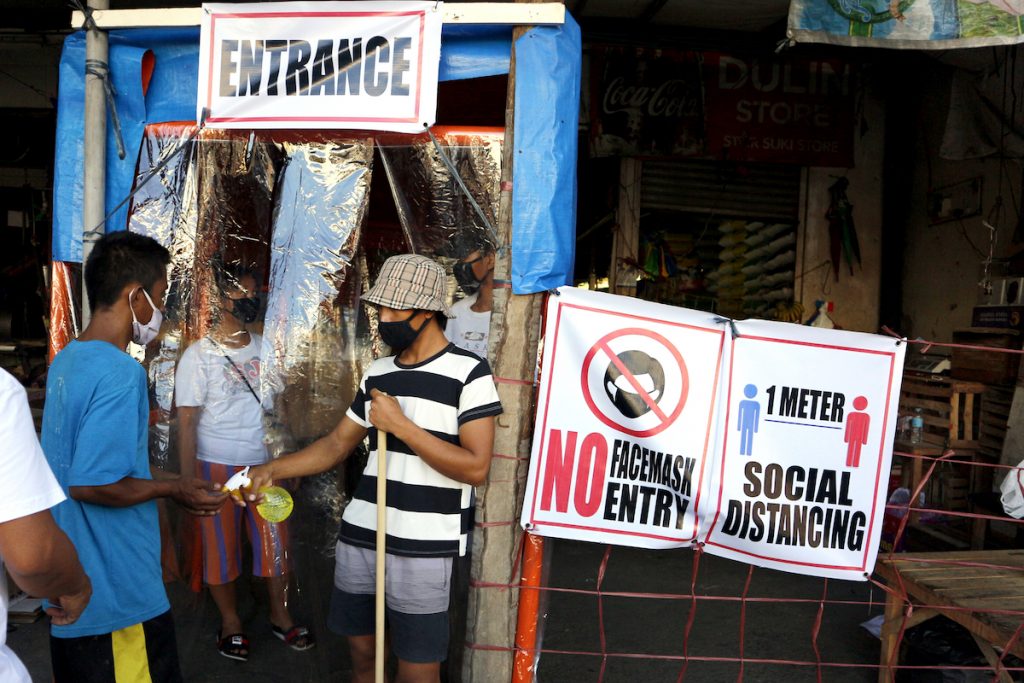We live in a period of uncertainty. We cannot predict the future. We can only take into consideration various scenarios — especially the worst-case and the best-case. What is certain is that many people all over the world are severely affected by the pandemic and we are facing a more catastrophic crisis — climate change.
So how can the Church carry out her mission at present and in the decades to come? This is what every local Church and religious communities should answer based on their particular context.
What follows are some general ideas and suggestions that might be helpful and can be taken into consideration. What is important is to think strategically, always assessing developments and trends — the external threats/opportunities and the internal strengths/weaknesses — being creative and coming up with fresh ideas and bold action.
The Church can only survive and thrive when she is able to adapt to the changing situation.
Caring for a wounded world
Caring for the victims of the pandemic and the consequent economic crisis is a priority for the Church in collaboration with civil society and government institutions. The Church must mobilize its resources in supporting relief and humanitarian efforts.
This requires supporting those in the frontlines — the medical workers who are engaged in caring for the sick and the dying. In concrete, this will take the form of providing accommodation, food, transportation during lockdowns and quarantines.
This also means providing psycho-spiritual care for the bereaved and front-liners who may be suffering from post-traumatic stress disorder. This can take the form of on-line counselling.
And because the poor are the most vulnerable especially under lockdown and beyond, the Church (especially at the parish and grassroots level) should respond to their basic needs both material and spiritual.
The most immediate is providing food assistance and encouragement.
To avoid dependency and passivity, everyone must actively be involved in the process of addressing their needs and problems. This can only be sustained through the spirit of communion — of sharing and participation.
Digital information/communication technology/social media should be used for this purpose — in identifying those in need, inviting volunteers and contributions, distribution centers, networks and delivery, etc.


New forms of communion and solidarity
The continuing threat of pandemic requires physical distancing — this will be the new normal. There will be restrictions on large gathering/assemblies. International and domestic travel will be limited. The trend is towards doing things locally —including economic production.
More time will be spent at home. Most of the face-to-face encounter takes place at home and in the community. The new mantra: Work at home if you can, go to the office or workplace only if it is really necessary.
The same is happening in education. There will be more online learning and home-schooling. This will be the opportunity for promoting the family and household as the domestic church. Parents will spend more time with their children. This is the time to experience the loving communion and sharing within the family.
However, the family should not be isolated from other families. They need to link up with other families and individuals within the immediate neighborhood and local community. Forming or revitalizing a network of small communities/basic ecclesial communities (BECs), cells or family groupings becomes necessary.
The parish must become truly a communion of BECs. The model of the Church as described in Acts (2:42-46, 4:32-35) must be experienced once again. The sense of belonging, sharing and the spirit of stewardship must be inculcated as the communitarian dimension is emphasized. This is the antidote to isolation and individualism.
The communion and solidarity of the parishes with the dioceses and wider levels (national, regional, universal) will take on a new form. This is also the case among religious institutes and communities.
In promoting communion and solidarity we should be aware that we are living in the digital era. We stay connected with one another. We can develop or join virtual communities and ecclesial movements that have local, national and global reach through the digital information and communication technology and social media.
Online meetings and assemblies are now possible. With the development of more advanced and cheap technologies all these can be possible even in areas that are remote and distant.


Communion always includes participation in mission. This means synodality —journeying together. Synodality involves participation in the decision-making process — in governance. It also means participation in mission — the prophetic-evangelizing mission, the priestly mission, and the kingly-servant mission. This synodality — communion and participation in mission — must be realized not only at the universal level but at the local level, at the diocese, down to the parish, basic ecclesial communities and the Christian families.
In a world that is becoming decentralized and fragmented, those in pastoral leadership must employ new ways of exercising leadership and governance. The new digital technology and social media make it possible for regular and direct communication and consultation instantly overcoming physical distance.
Leaders and members can be more interconnected. Church leaders should not be isolated but should continually be in touch with each other and the people they serve. Online meetings and assemblies are possible. The clergy should continue to communicate to the faithful and listen to them.
A more participative style of leadership is possible avoiding a top-down model. This can be done at all levels — at the local, national, regional, universal level. Strategic thinking and acting are required — of seeing the big picture and the long view.
Father Amado Picardal is a Filipino Redemptorist priest who holds a doctorate in theology from the Gregorian University in Rome. He has lived a life of solitude as a hermit after an active life as missionary, professor, promoter of Basic Ecclesial Communities, and peace and human rights advocate. He is currently executive co-secretary of the Commission for Justice, Peace and Integrity of Creation in Rome.


